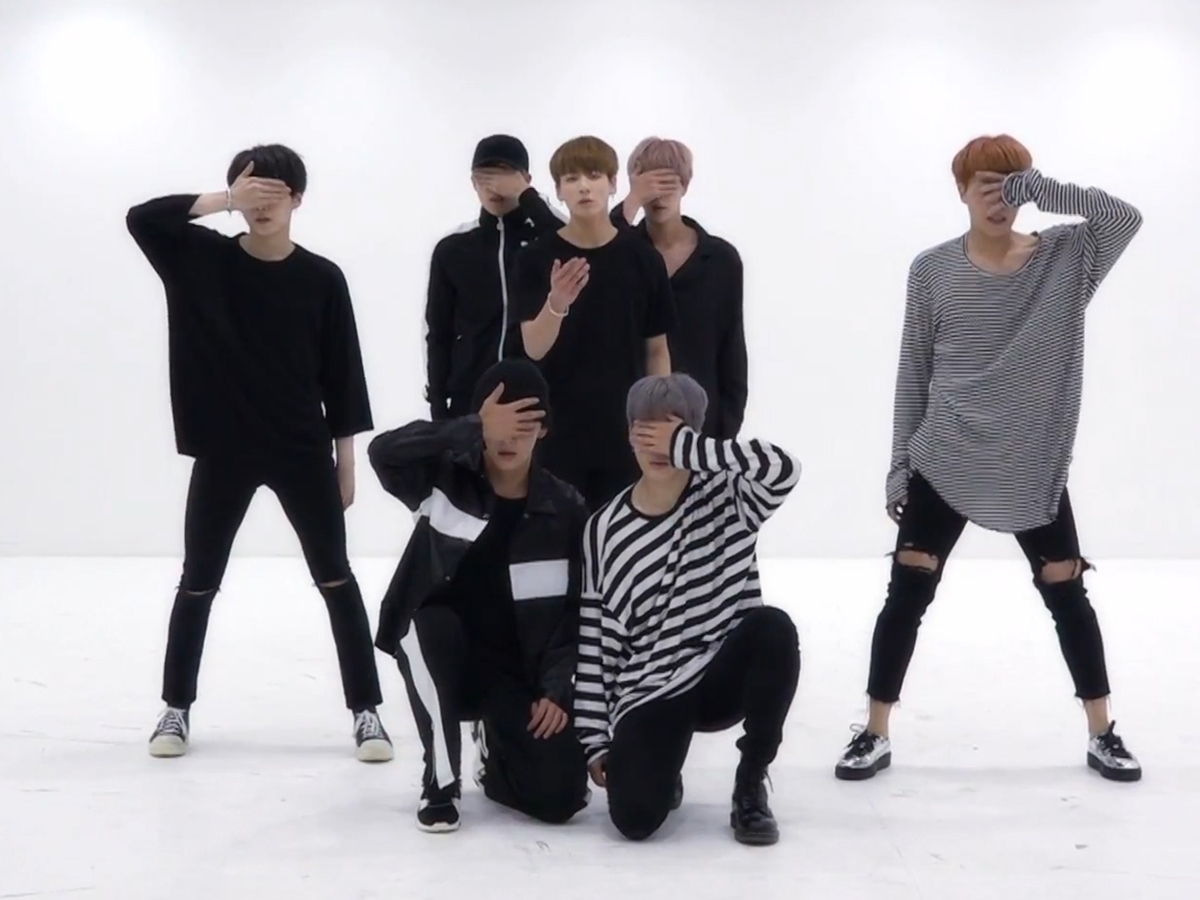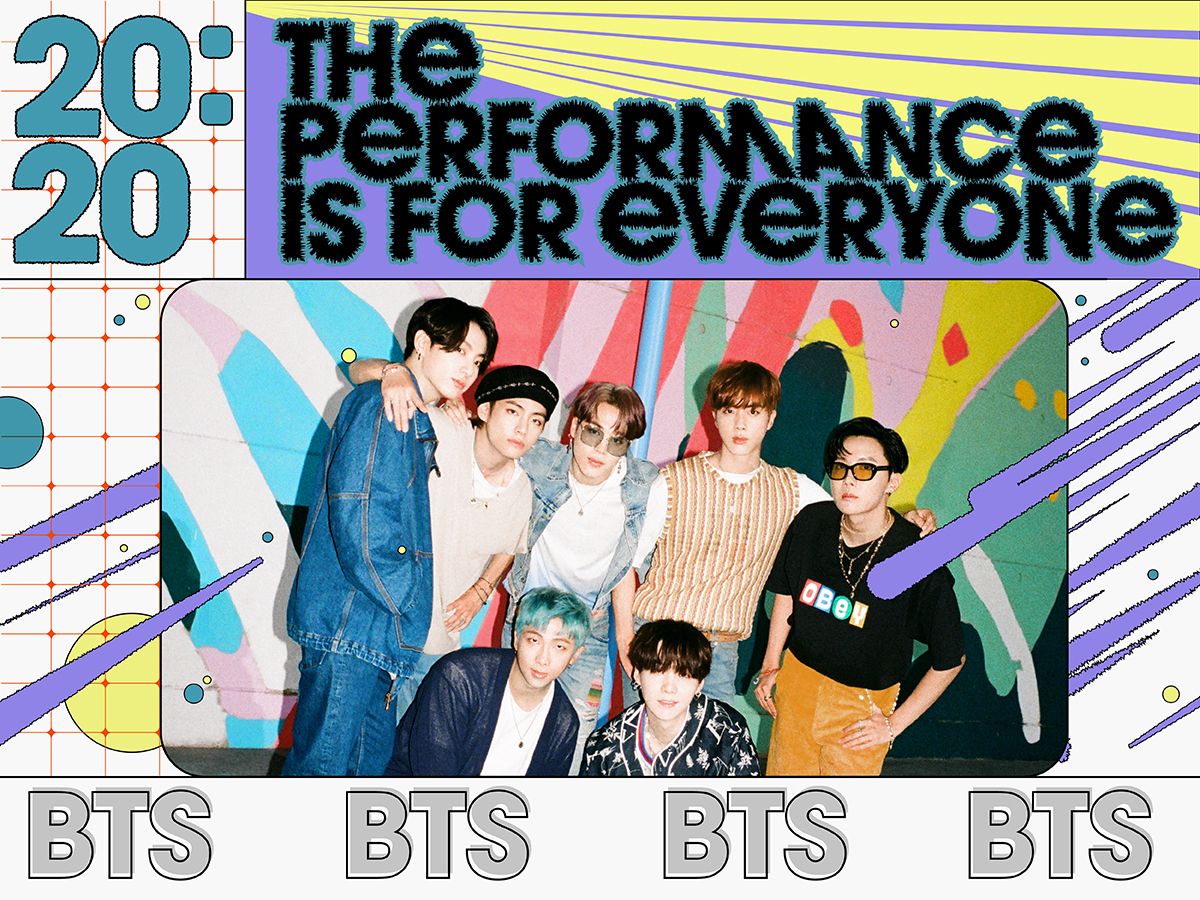
FEATURE
A Korean culture and art researcher breaks down BTS’s dances
An intercultural view of the group’s choreography
2021.02.15
Performances in the age of globalization are a product of cultural hybridity. In modern times, when the geographical boundaries between cultures are blurred, intercultural creations that take new forms by combining or harmonizing different cultures have become inevitable. To that end, BTS’s choreography is noteworthy for the phenomenon it has created in the music industry. They convey messages through their music and lyrics while also conveying emotion through their dances, unbound by any language barrier, using choreography to pass through the barriers of language and geography.
For example, in the choreography for “Blood Sweat & Tears,” the right–left–up–down movement on each beat is very similar in form to sabangchigi, a Korean traditional dance. Sabangchigi is an aesthetic structure of Korean dance performed step-by-step according to the principles that guide its movements. The most basic step is an interaction with the sky and earth; the meaning of humanity can be explained by the flow of chi interacting with the sky, ground, and other surroundings. When this happens, humans are in communion with the sky and earth and become a microcosm of interaction with the sun and moon. We cannot be sure whether BTS had sabangchigi in mind when they made their “Blood Sweat & Tears” choreography, but sabangchigi has long added palpable style and technique to Korean dancing and is very familiar to Koreans. As such, similar moves can easily be found throughout the catalog of K-pop choreography, and as these familiar elements of Korean traditional dance fuse with K-pop choreography, those once customary movements look new.
“Boy with Luv” is remarkable for a similar reason. Among the dance moves in this song, there is one circular motion, in which one member stays in the middle while the rest stoop down and surround him while moving in a circle. The motion of this choreography is very similar to the bending over seen in ganggangsullae, a traditional dance, and while the movements inside the circle are different, the former is clearly reminiscent of the latter in the simple motions it makes use of to express exhilaration. As defined using the theorized origin of primitive ballad dance, ganggangsullae is the sound of many people dancing in a circle, and people in a circle playing noisily while holding hands and dancing. In ganggangsullae, the many dancers in the encompassing circle bend at the waist in order to better show the moves performed by the sole dancer in the center that they surround. Dances in which performers surround one person in the middle are well known to Koreans, even aside from ganggangsullae.
For example, in the choreography for “Blood Sweat & Tears,” the right–left–up–down movement on each beat is very similar in form to sabangchigi, a Korean traditional dance. Sabangchigi is an aesthetic structure of Korean dance performed step-by-step according to the principles that guide its movements. The most basic step is an interaction with the sky and earth; the meaning of humanity can be explained by the flow of chi interacting with the sky, ground, and other surroundings. When this happens, humans are in communion with the sky and earth and become a microcosm of interaction with the sun and moon. We cannot be sure whether BTS had sabangchigi in mind when they made their “Blood Sweat & Tears” choreography, but sabangchigi has long added palpable style and technique to Korean dancing and is very familiar to Koreans. As such, similar moves can easily be found throughout the catalog of K-pop choreography, and as these familiar elements of Korean traditional dance fuse with K-pop choreography, those once customary movements look new.
“Boy with Luv” is remarkable for a similar reason. Among the dance moves in this song, there is one circular motion, in which one member stays in the middle while the rest stoop down and surround him while moving in a circle. The motion of this choreography is very similar to the bending over seen in ganggangsullae, a traditional dance, and while the movements inside the circle are different, the former is clearly reminiscent of the latter in the simple motions it makes use of to express exhilaration. As defined using the theorized origin of primitive ballad dance, ganggangsullae is the sound of many people dancing in a circle, and people in a circle playing noisily while holding hands and dancing. In ganggangsullae, the many dancers in the encompassing circle bend at the waist in order to better show the moves performed by the sole dancer in the center that they surround. Dances in which performers surround one person in the middle are well known to Koreans, even aside from ganggangsullae.
Choreography like this from BTS shows an important cultural phenomenon that is happening across the world today. BTS mix various musical genres and harmonize them with other cultural characteristics, and through this process are creating new ideas by freely integrating various elements of other cultures with their own. During Jimin’s solo dance in “Spring Day,” he raises his feet skyward proportionately to the strength he uses to draw in his legs. The way he shifts his center of gravity, and the connecting movement between his arms and each step, are strikingly similar to the movements found in modern and Korean interpretive dance. In other words, Jimin is greatly influenced by having studied dance as his major, and we can see that he combines his mastery of dance with K-pop sensibilities to unlock new possibilities. According to French theater and cultural exchange scholar Patrice Pavis, “When experience with expanding cultural boundaries is accumulated in the body—that is, when that body meets new cultures—there is an increase in experimentation.” Similarly, BTS entered the world of K-pop with bodies that had mastered their cultural backgrounds, which include diverse present-day popular music and Korean dance, and so their culture and the cultures of those who observe them are undergoing dilation. This is only one of the cultural trends taking place on the Internet as people from around the world interconnect with one another. BTS are the product of an era in which diverse cultures are integrating while favoring not one particular culture, but rather maintaining each individual culture’s unique characteristics. Looking from the perspective of someone who studies Korean culture and art, I am pleased that Korea’s characteristic style is a natural fit for the direction this new era is taking.
Article. Youngin Jo(Korea Culture and Art Society)
Photo Credit. BANGTANTV Youtube
Copyright © Weverse Magazine. All rights reserved.
Unauthorized reproduction and distribution prohibited.
Unauthorized reproduction and distribution prohibited.
Read More
- 2020 BTS’s performance2020.12.28
